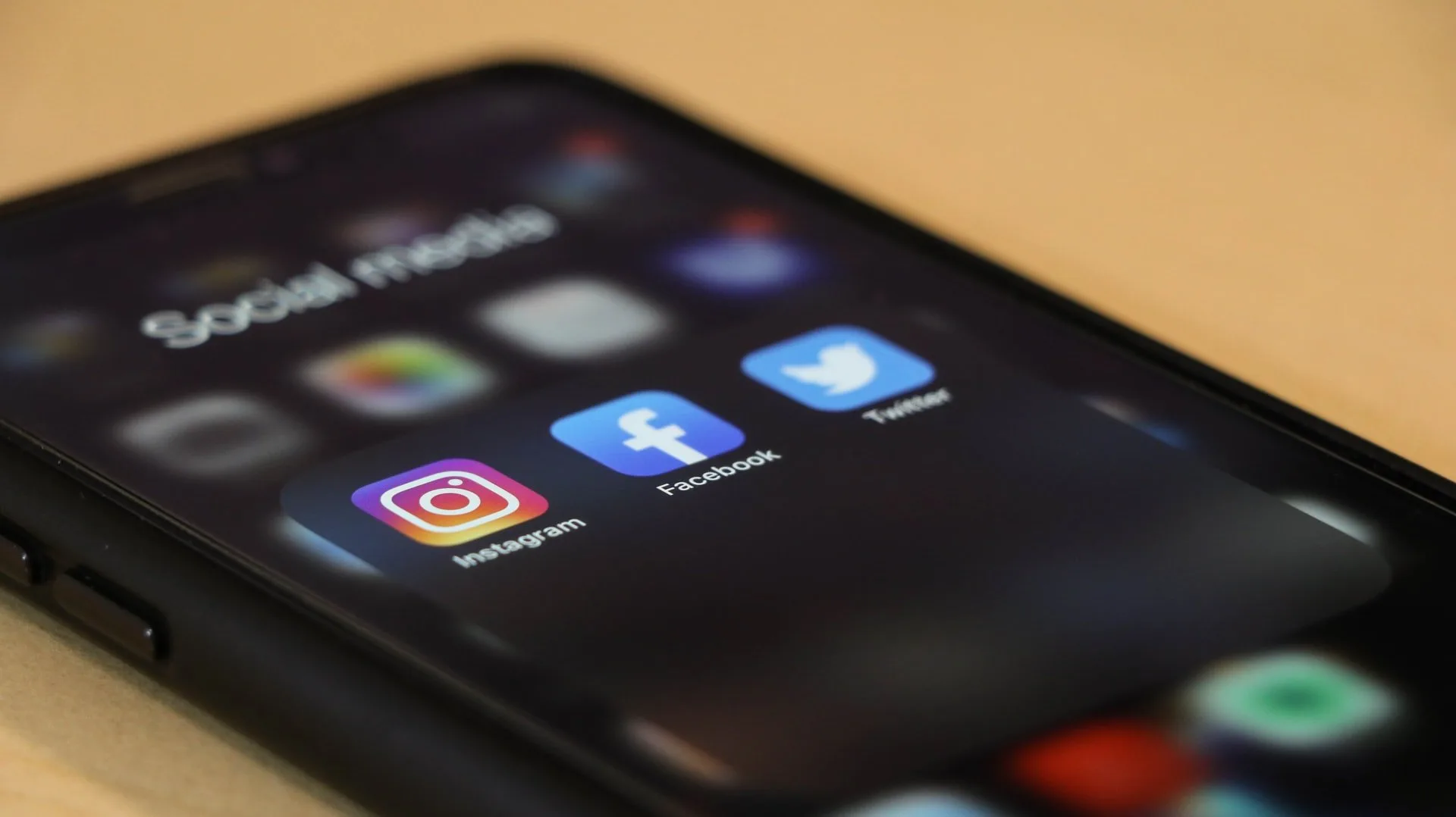It’s late, you climb into bed and your head hits the pillow. You feel exhausted, and you close your eyes, but you are soon met with an irresistible temptation to reach for your phone. Instead of sleeping, you fall face-first into social media channels and begin to mindlessly scroll and scroll and scroll…
Does this sound familiar to you?
Tom Bivins, head of ergonomics and wellbeing at Vita Health Group, discusses why it is important to get to the heart of your compulsive need for a night-time stroll.
Humans are social creatures, and the COVID-19 pandemic threw everyone into an unusually confined and restricted way of living. Social media is a platform that provides an opportunity for the community interaction we crave and certainly, in many ways, technology has been a lifeline. It may be unsurprising for you to learn then that people spent a record amount of time online during the peak of the pandemic and 36% more time specifically using social media channels.
Social media and mental health
We are beginning to understand the damaging mental health effects of uncontrollable smartphone usage. A new study suggests that social media addiction is on the increase. King’s College London studied over a thousand people aged 18-30. They found that 39% had symptoms such as losing control over how long they spend on their phone and feelings of distress when they couldn’t access it. Most notably here, more than two-thirds of the addicts had trouble sleeping, too. A different study that polled hospital employees and university students found that 70% of people report using social media after getting into bed, with almost 15% spending an hour or more doing so.

Photo by Ketut Subiyanto from Pexels
Plus, because of the pandemic, we have all been exposed to a greater amount of disaster news. This may amplify the harmful impact of social media use on depression and other mental health problems.
Yes, there could be multiple reasons you find yourself mindlessly and uncontrollably picking up your phone in bed. However, research is strongly suggesting social media addiction is on the increase. That said, what I would like to address here is the late-night use of social media as an emotional avoidance tactic. Scrolling through social media in bed as a desperate attempt to avoid emotions could be a warning sign that you are living with a chronic mental health condition.
Social media use as an emotional avoidance tactic
Night-time is often the first time we are left alone with our own thoughts without distraction. Whilst this might come as a welcome relief to some, we are finding that many people are using their phones as an avoidance tactic. They’re pushing negative or uncomfortable thoughts out of mind. Although these thoughts and feelings are significant to our personal wellbeing, we are never explicitly taught how to manage them. Consequently, the arrival of emotions can feel overwhelming, trigger anxiety, and cause our minds and hearts to race. As a result, one ends up scrambling for the nearest distraction in a bid to dampen those feelings.
Research suggests that one of the main causes of many psychological problems is the habit of emotional avoidance. It is common to see avoidance tactics being used by those who suffer with post-traumatic stress disorder (PTSD) to escape painful emotions like shame or sadness. Alcohol and drugs are often thought of as the most common avoidance tactics. However, now people are engaging in late-night social media scrolling as an attempt to either build a barrier to stop the flood of emotion, or to exhaust themselves to the point they fall asleep and can avoid dealing with thoughts altogether.

Photo by Mikko Urmi
The danger is that emotional avoidance is only a temporary fix to suppressing difficult thoughts and feelings. Not only will your body be using considerable effort to keep them quashed, but it is likely that the feelings you are avoiding will grow stronger, more intense, and uncontrollable over time. This may lead to an individual taking extreme measures to avoid emotions.
How to break the cycle of emotional avoidance
Constant use of emotional avoidance tactics like scrolling through social media can be detrimental to your mental and physical wellbeing. Preventative management techniques will help you break the vicious cycle. This will leave you feeling more comfortable with your emotions and better able to achieve restful sleep.
Here are five steps you can take to break the cycle, right from when you feel an intense urge to pick up your phone, to accessing support that will help you manage this in the long term.
1. Understand what emotions are
Think of your emotions as a source of information that is providing you with insight into something that is happening to you and around you. Know that emotions are just one source of information on a whole spectrum of other sources including your knowledge, lived experience, and thoughts. Let us for a minute think of emotions in the concept of a weather report; when the weather is bad – raining, stormy, windy – rarely would you become fixated on it to the point it becomes the overriding factor in your day. Instead, you accept the weather and adjust; accordingly, you take an umbrella, put on your wellington boots, and head out as planned.
2. Learn to accept your emotions
It is completely normal to experience a whole range of emotions, positive and negative. This is all part of being a human being. It is also important to acknowledge that, no matter who you are, the COVID-19 pandemic has created an entirely unusual and anxiety-provoking period. Everything is exacerbated. Accepting emotions and situations is one of the best ways to start managing unhealthy avoidance practices.

Photo by Cristian Dina from Pexels
When you accept that emotion is with you, it gives you a chance to learn about it, to befriend it, and familiarise yourself with how it makes you feel, making it easier to integrate it into your life. It may sound counterintuitive but when you accept a negative emotion, it tends to tarnish its destructive power.
3. Try to distract instead of avoiding
Next time you are tempted to reach for your phone when you are in bed, say to yourself, “stop” and ask yourself these two questions. The first is “Why am I reaching for my phone?” and the second is “What emotions am I feeling?”
Guide yourself to an easy breathing rhythm. Allow yourself to feel your emotions for a minute or two, with as much love and compassion as you can. When you open yourself to the experience and tackle this moment with kindness, it is likely you will feel you can better manage the situation. Switching mindless social media scrolling for this mindful activity is a quick, yet positive step.
If your emotions become overwhelming, temporarily distract yourself. Calmly get out of bed or remove yourself from the situation by rolling away from your phone. Commit yourself at that moment to a self-soothing activity. This can include calling a trusted friend, taking a bath, listening to calm music or sleep sounds, or reading a magazine or book.
4. Self-monitor
Keep a diary or a log of your emotions. Writing about your feelings can provide you with a safe and private way to release deep and potentially destructive thoughts. Over time, it could help prevent you from undertaking avoidance tactics like fixating on social media.

Photo by Ben Blennerhassett on Unsplash
Maintaining a consistent log of emotions is also helpful if your emotions feel particularly unclear or unpredictable. Looking back over what you’ve written – at a time that feels comfortable for you to do so – can help provide you with a sense of situations or emotions you find particularly triggering.
5. Commit to long-term professional support
The best way to manage emotional avoidance is to develop a long-term preventative strategy. Talking therapies provide an opportunity to both express and build an understanding of the emotions you are experiencing. There are a number of options available. These include Cognitive Behavioural Therapy (CBT) which tends to focus on what you are experiencing right now. Another service is Acceptance and Commitment Therapy (ACT) which looks at breaking down avoidance. The NHS offers free online talking and mental health services.
The important thing is that you are provided with a safe place to express and approach your emotions. Support from family, friends, and loved ones may also provide this for you. If these are scenarios you recognise in your own life, and you feel you cannot manage them on your own, I encourage you to seek medical advice and support from their GP.
Who is the author?
Tom Bivins is the head of ergonomics and wellbeing at healthcare company, Vita Health Group.



![women [longevity live]](https://longevitylive.com/wp-content/uploads/2020/01/photo-of-women-walking-down-the-street-1116984-100x100.jpg)










